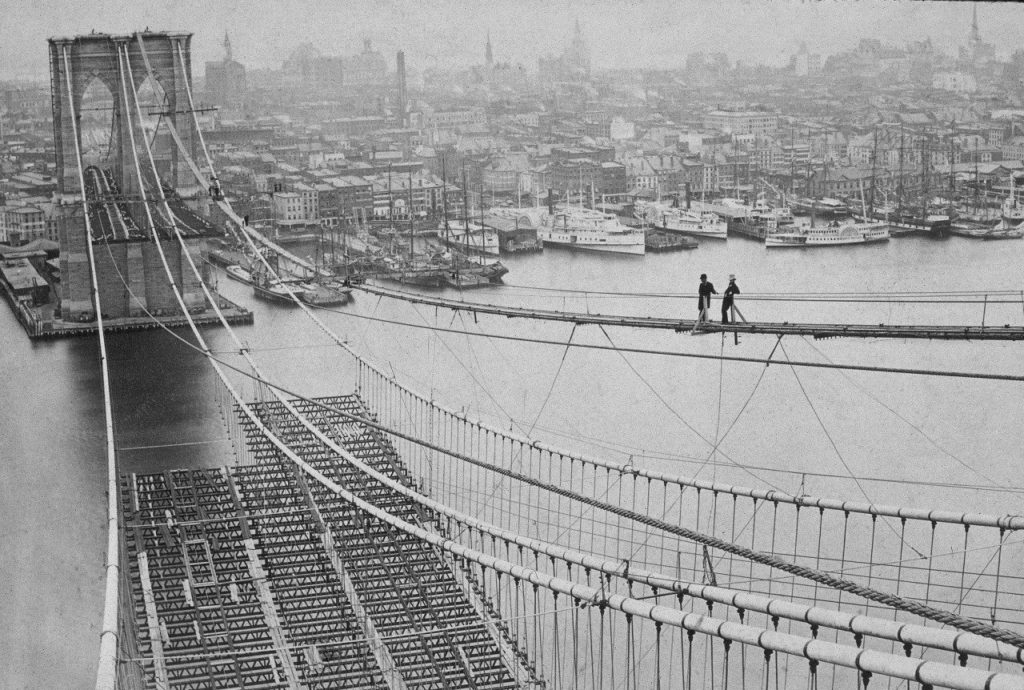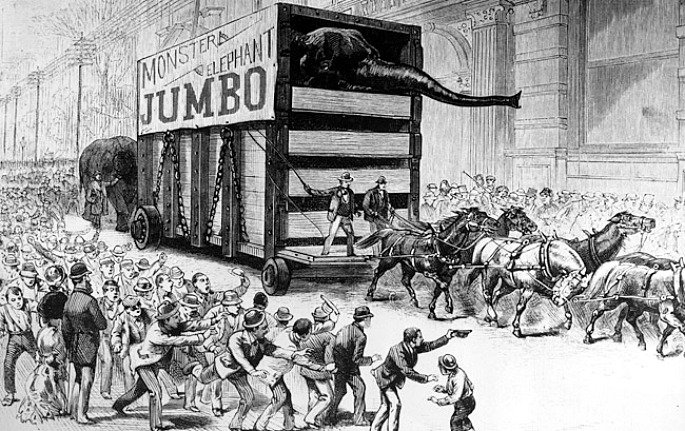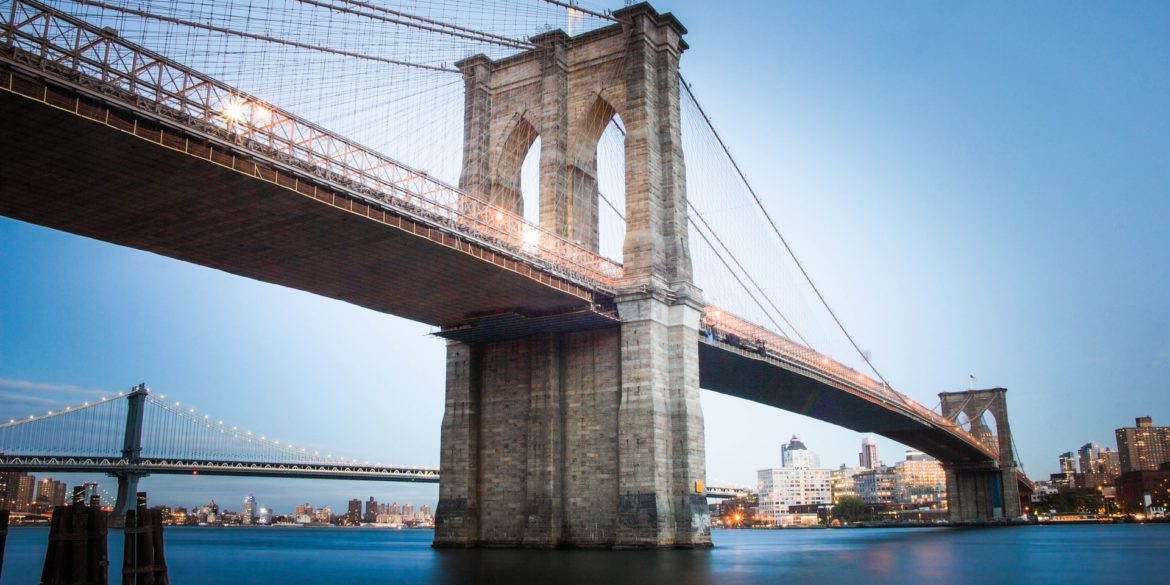Only one bridge in existence today can claim title to being a wine cellar, fallout shelter, and former home to George Washington.
That’s right. The Brooklyn Bridge—that critical artery connecting Brooklyn to Manhattan over the East River—has a storied past nearly as colorful as the New Yorkers that cross it every day.
Founded in 1883, the bridge is actually an early hallmark of gender equality. While the original designer behind the bridge was a Prussian-born engineer named John Augustus Roebling, it was actually his daughter-in-law, Emily Warren Roebling, who saw construction through to completion. Today, it is Mrs. Roebling who is recognized as the pioneer behind the bridge and she went on to receive a law degree from New York University, writing several essays on gender equality.

P.T. Barnum marched twenty-one elephants across the bridge one year after its completion. Not only was the bridge the longest span in the world at the time (1,595 feet), it was also the first bridge made using steel wire suspension. Needless to say, many New Yorkers were worried about the bridge’s safety and stability. What better way to prove the bridge’s reliability than by leading an army of elephants over it like Hannibal crossing the Alps?

From wine cellar to fallout shelter, the bridge has served multiple uses. Engineers build storage vaults underneath the bridge’s anchorages. They soon discovered that the cool temperatures in these vaults were perfect for storing wine so, these spaces were rented out to the public up until World War I as wine cellars. Liquor companies paid anywhere from $500 to $5,000 per month to keep their bottles cool. While these vaults were thought to have been abandoned after the war, in 2006, one of these cellars was discovered to have been converted into a Cold War fallout shelter—complete with food, water, and medical supplies.
If you see the bridge today, you’ll find a plaque commemorating George Washington’s mansion. The Manhattan side of the bridge was built on land where the nation’s first Presidential Mansion sat at the intersection of Cherry Street and Pearl Street.
So, the next time you’re in town or commuting across the river, take a second to admire the history behind one of America’s greatest architectural landmarks.


